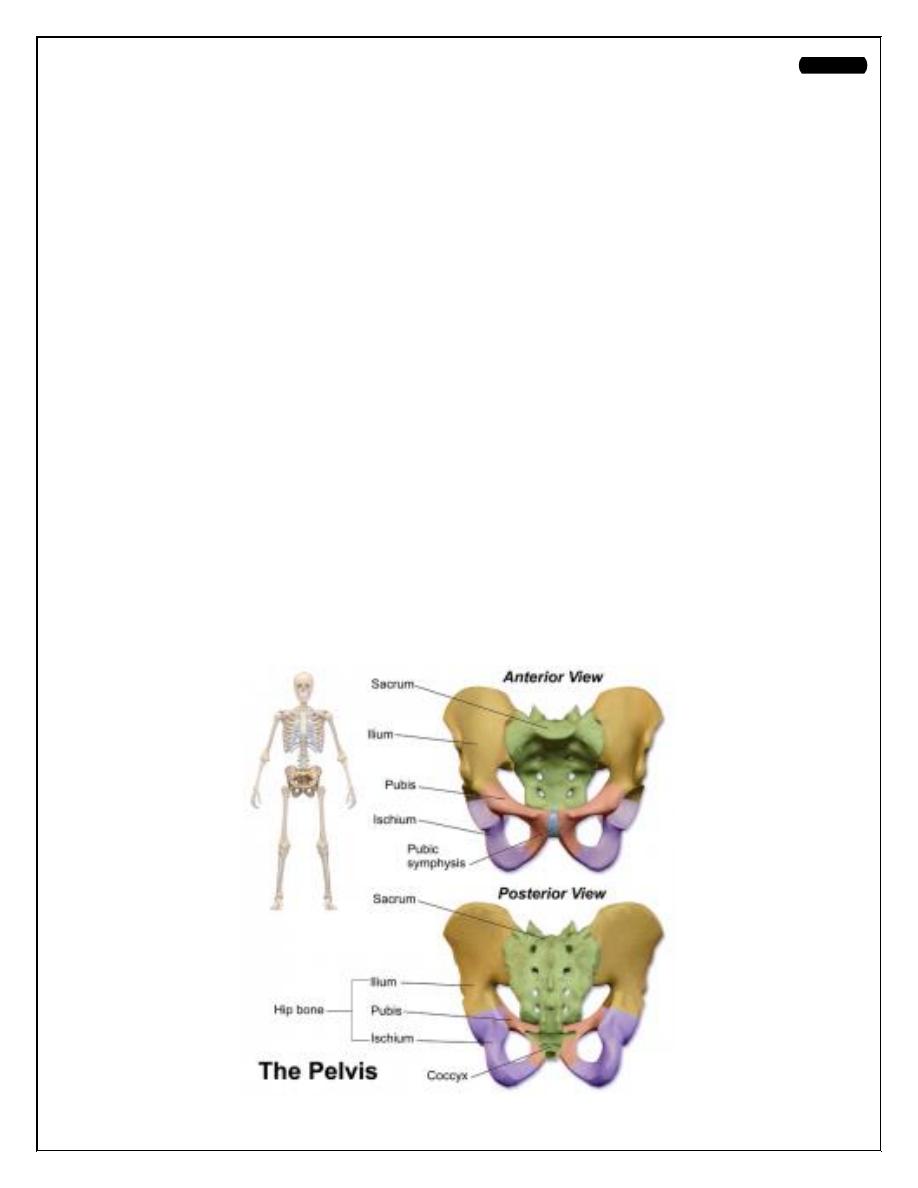
Fifth Stage
Orthopedic
Dr Haider – Lecture 7
Pelvic fractures
Introduction :
• Fractures of the pelvis account for less than 5% of all skeletal injuries, but it is important
because it associated with:-
• blood loss and shock.
• Soft tissue injuries ( esp urogenital )
• Sepsis.
• ARDS.
• Because of those mortality rate exceeds 10%.
Relevant anatomy :
BONES :
• Pelvis formed of tow innominate bones
Attached to the sacrum posteriorly .
• Each innominate bone formed from fusion of 3 bones ( pubis , ischium and ileum )
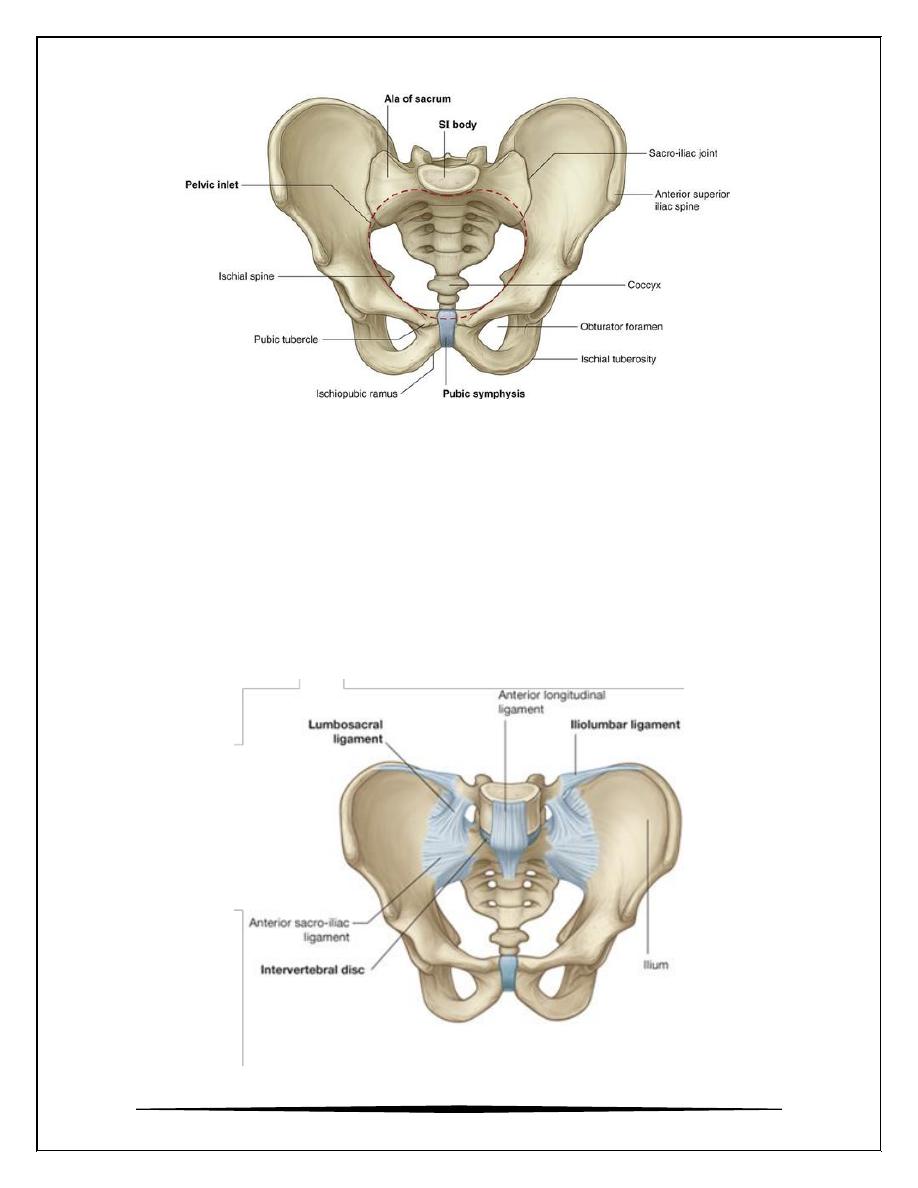
2
Pelvic ring :
Ligaments :
• Anterior ligaments - Symphyseal ligaments (resist external rotation)
• posterior sacroiliac complex (posterior tension band) strongest ligaments in the body
, more important than anterior structures for pelvic ring stability
– anterior sacroiliac ligaments
– interosseous sacroiliac lig
– posterior sacroiliac lig
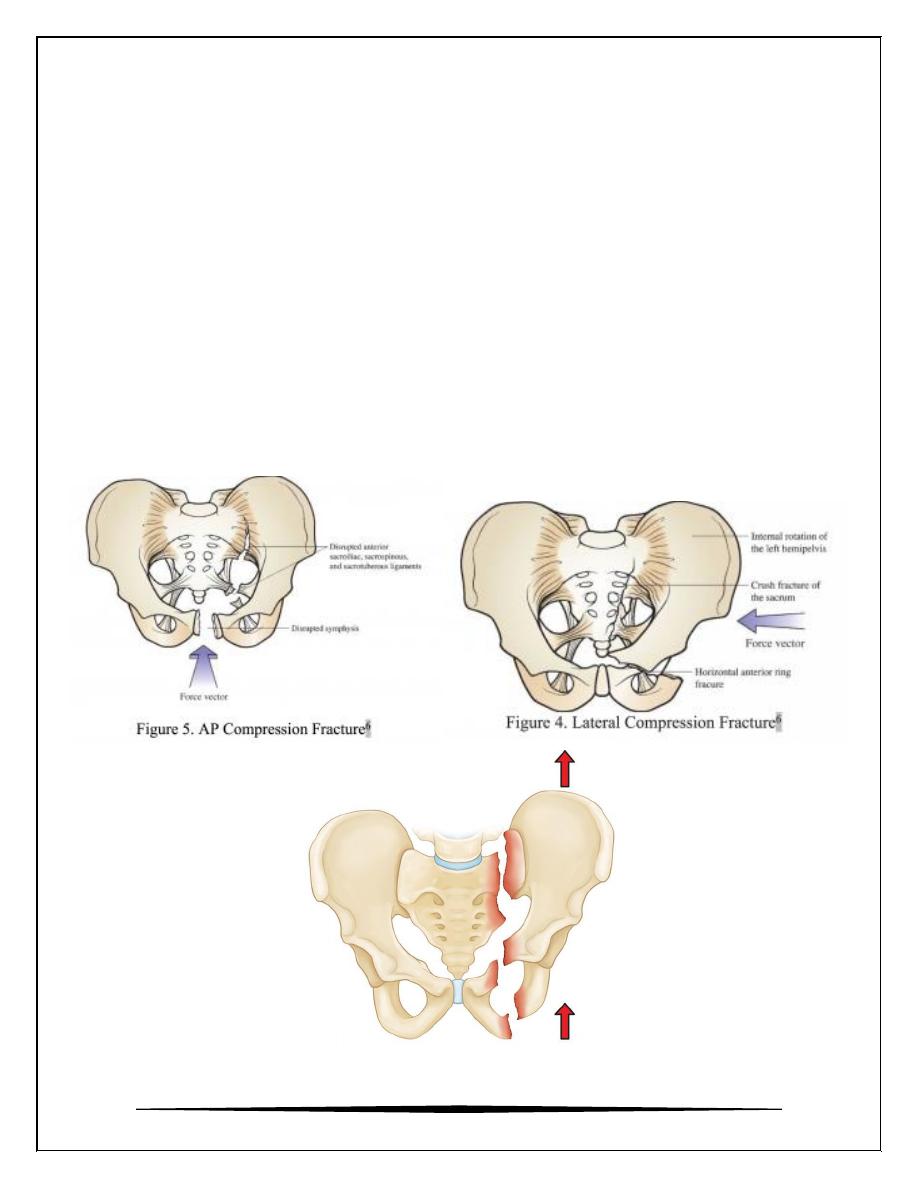
3
Clinical assessment
History/mechanism of injury
Pelvic injuries usually caused by high energy mechanisms (Most commely MVA)
• Anterior posterior compression – secondary force in an AP direction leading to diastasis
of the symphysis pubis, with or without diastasis of the sacroiliac joint.
• Lateral compression – lateral compression force, which cause rotation of the pelvis
inwards, leading to fractures in the sacroiliac region and pubic rami.
• Vertical shear – an axial shear force with disruption sacroiliac junction, combined with
cephalic displacement of the fracture.
• Combined mechanism – a combination of two of the above mechanisms , which leads
to a pattern of pelvic fracture that is a combination of one or more of the above fracture
types
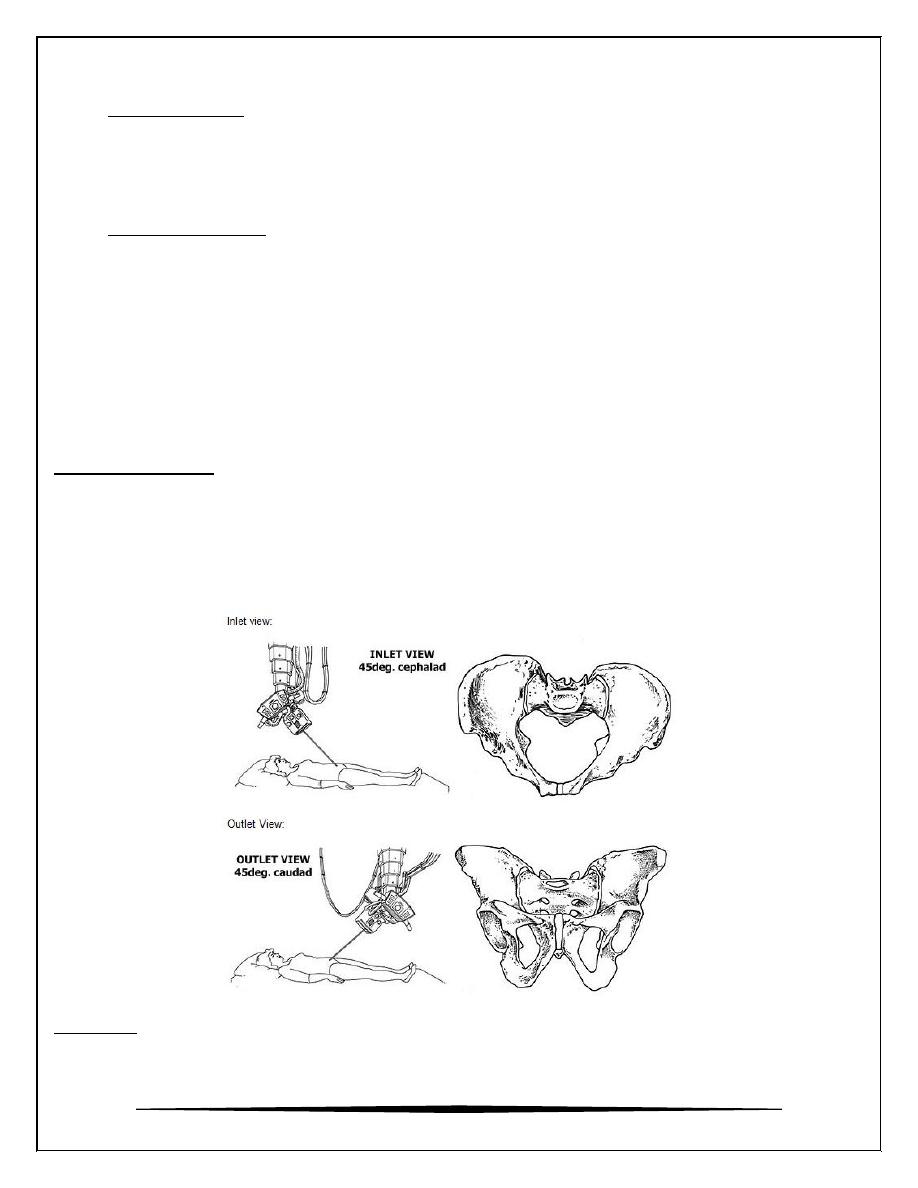
4
Physical Examination
• Primary survey :-
• Begins with the ABCs (airway, breathing, and circulation)
hemorrhagic shock is common with pelvic injuries
• Secondary survey :-
• PELVIC COMPRESSION/DISTRACTION test
• Examination of perineum ( for hematoma or bleeding )
• Rectal and vaginal examination.
• Examination of lower limbs.
Imaging
Plain radiography :
• AP ,
• inlet and outlet views
• iliac oblique and obturator oblique views for acetabulum fracture assessment
CT SCAN :
• CT is the modality of choice for accurately showing acetabular or pelvic ring fractures
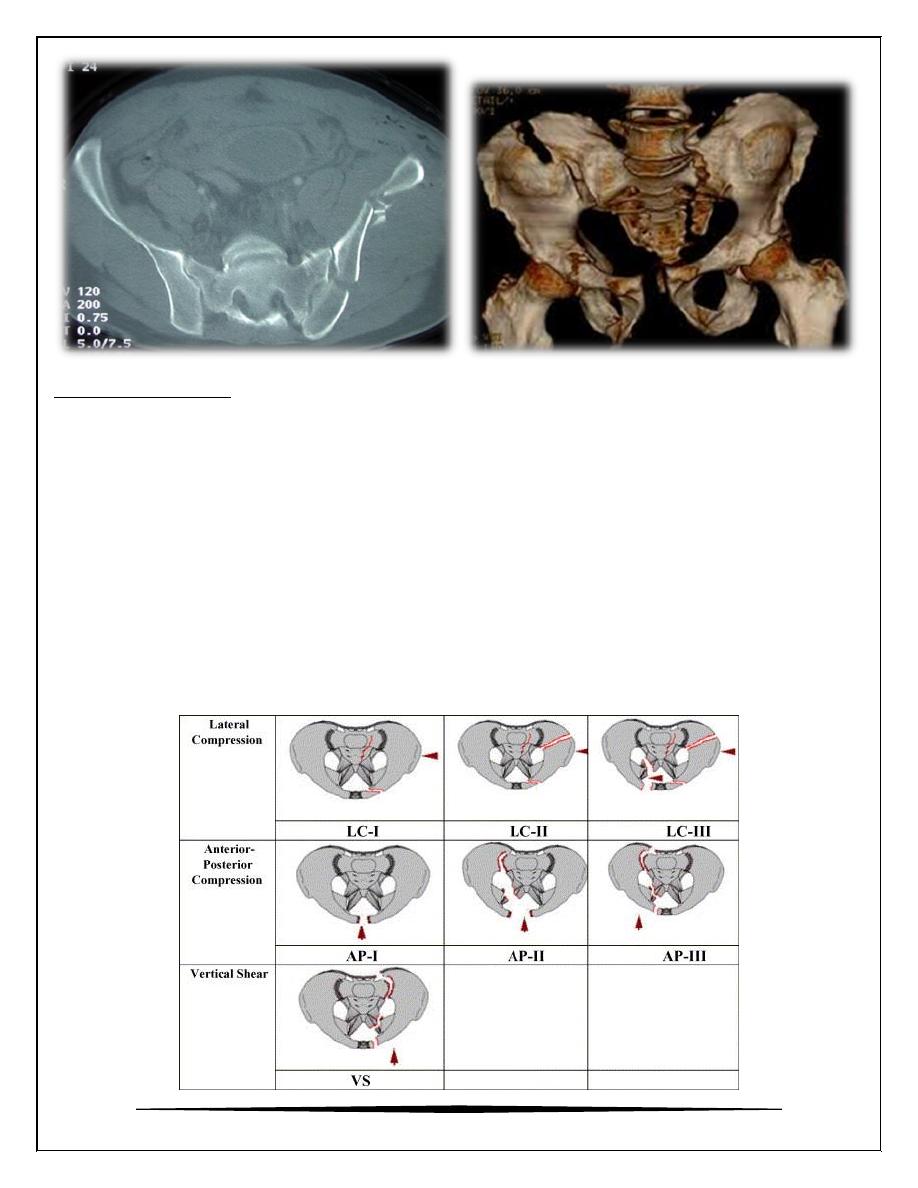
5
Other investigations :
• BLOOD GROUPING AND CROSSMATCHING
• FAST ( for associated visceral injuries )
• DIAGNOSTIC PERITONEAL LAVAGE ( for intraperitoneal bleeding )
• CT ANGIO ( for persistant shock )
• RETROGRADE URETHROGRAM ( fro associated urethral injuries )
CLASSIFICATION of pelvic fractures
• Young and Burgess Classification is the Most common classification used and Based on
the mechanism of injury
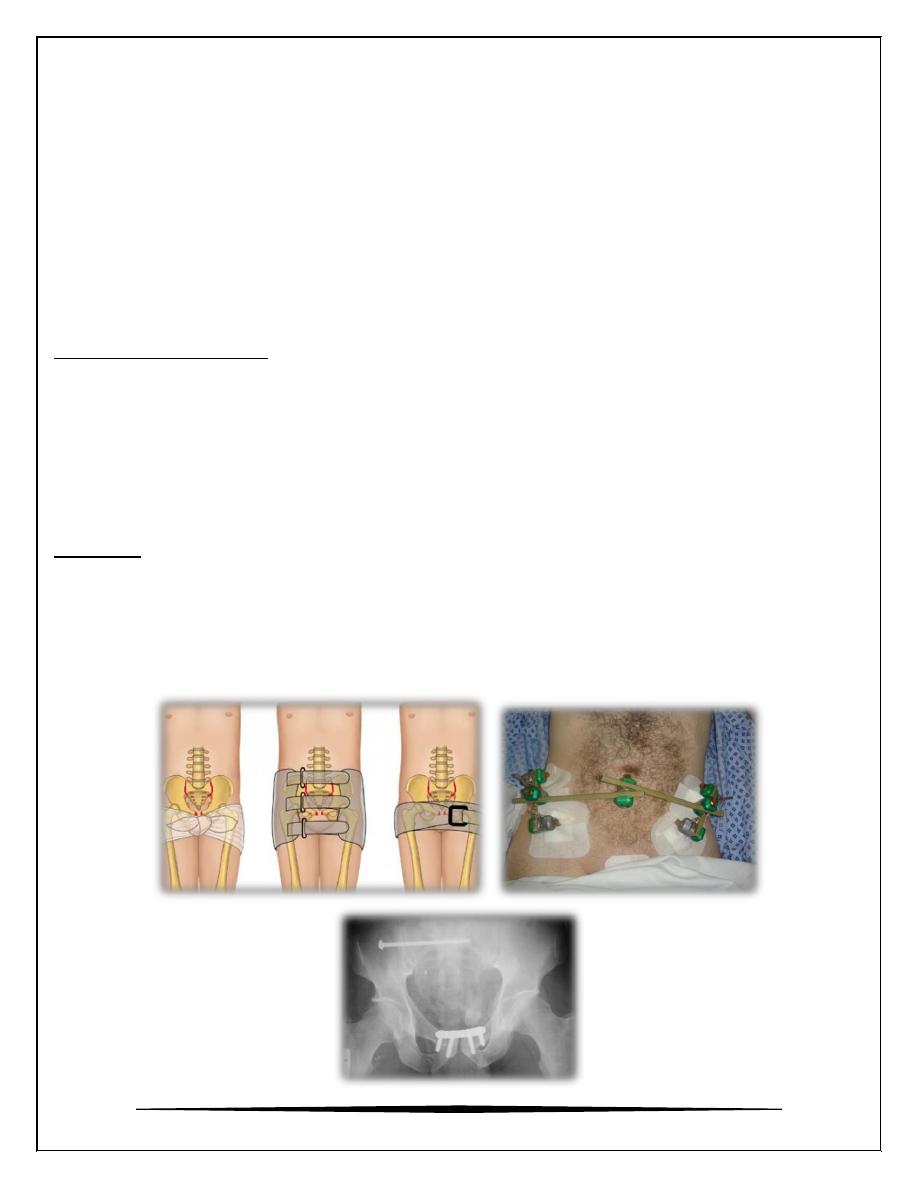
6
Management
EARLY MANAGEMEN:
• should follow the ATLS protocol
• primary survey ,
• secondary survey
• and definitive management
Definitive management :
non operative treatment :
• Isolated non pelvic ring fractures
• minimally displaced fractures
• pubic diastasis of less than 2 cm
Treatment by bed rest, and may be combined with lower limb traction for 4–6 weeks
Operative :
• Plevic binder can be used initially to control the intrapelvic hemorrhage .
• External fixation : with pins in both iliac blades connected by an anterior bar.
• Internal fixation by attaching a plate across the symphysis or for post sacroiliac fixation.

7
Complications :
• Thromboembolism : deep vein thrombosis or pulmonary embolism. Prophylactic
anticoagulants .
• Neurological injury
• Urogenital injuries
• Persistent sacroiliac pain
Thank you,,,
